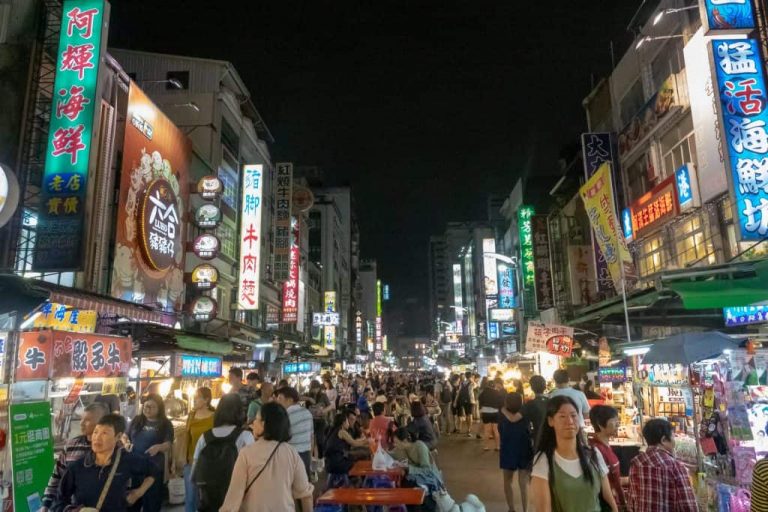Travel Medicine — Seven Essentials to Pack
The most critical seven types of travel medicine we put in our bags for every adventure we go on.

Hey, guess what, we’re not doctors. This isn’t medical advice. This is just a suggested packing list, and you should consult your doctor especially if you have known conditions, allergies, plan to give these to children, and so on.
But we don’t, and we had to learn what medicines to pack before running off to places like Zanzibar, and this is our general packing list.
You’ll find in here a general discussion of pills from a layman’s perspective. We’ve done what research we can, but this isn’t gospel.
Check-in with your travel doctor if you’re going anywhere where you might need to consider malaria pills, yellow fever vaccination, rabies shots,
Contents
Summary — The Travel Medicine Shopping List
Here’s our baseline shopping list before we go out for 3-6 months at a time.
The Emergency Travel Medicine Shopping List
- Paracetamol / acetaminophen (painkillers) — ~100x bottle ($7 on Amazon — but the 500 pill bottle is about the same price)
- Ibuprofen (painkillers, anti-inflammatory) — ~100x ($8 for 500 pill bottle on Amazon)
- Phenylephrine (for cold symptoms) — bottle of 50-100 pills (Amazon)
- Diphendramine (for allergies, and it induces drowsiness), small pack of ~50 (Amazon)
- Melatonin (for jet lag), small bottle of ~150 (~$7 on Amazon)
- Azithromycin (for food poisoning), 3-pack (about $10, prescription only)
- A small first-aid kit for wounds/scratches — plasters, disinfectant, alcohol swabs ($5 on Amazon)
Become a Discoverer
Like this guide on emergency medicine? Want us to send you more stuff like this? Sign up to our email list.
Paracetamol / Acetaminophen — the best painkiller!

Paracetamol and Acetaminophen are both the same compound with different names. Americans call it Acetaminophen, and Australians, Europeans and Brits call it Paracetamol.
This is a cornerstone of our travel medicine list. When you have a headache you’re usually in no mood to go find a pharmacy that’s open.
Use paracetamol for relief from headaches and fever, although the jury is out whether it relieves fever symptoms in adults. You can also stack paracetamol with caffeine (take it with coffee) for faster results.
Common over-the-counter names: Panadol (Australia), Tylenol (US). But you can usually buy “generic” versions from supermarkets and pharmacy chains, and they’re always cheaper, and exactly the same.
How much paracetamol/acetaminophen to pack: The usual paracetamol dose for adults is 500-1000mg (often the latter for most adults) up to four times a day. Pack a 20-pack of 500mg pills, or more if you can get a compact value pack. You can replenish paracetamol easily in most pharmacies around the world, and it’s usually cheap.
Warning about overdosing Paracetamol: Be very careful not to overdose on paracetamol. If you are taking two medicines, make sure that only one has paracetamol in it. Generally, 3-4g (6-8 pills) is the maximum daily dose. The results of paracetamol toxicity are serious, and can include liver failure and death.
Ibuprofen — anti-inflammatory pain-killer

Ibuprofen is another pain-killer, but this one has anti-inflammatory properties. This means when you have a sore throat or pain that comes from swelling (like a sprained ankle or toothache… both of which happened to me recently), it can be more effective.
Some people just respond more to ibuprofen than to paracetamol. So it’s good to have both on tap.
How much Ibuprofen to pack: Pack a 20-pack of 200mg pills at least. The usual adult dose is 400mg, and sometimes you can get it in one pill. That should be enough to get you through most situations, taking one dose 2-4 times a day. You can replenish this easily in most pharmacies around the world, and it’s usually cheaper than in Western countries. The usual dose is 200-400mg every 4-6 hours.
Common over-the-counter names for ubuprofen: Neurofen, Aspirin. But generic-brand ibuprofen is often cheaper. You can get generic ibuprofen from pharmacies, supermarkets, and Amazon.
Pseudoephedrine or Phenylephrine — To get past cold symptoms

Pseudoephedrine is a decongestant. It relieves a blocked/stuffy nose. We take this when we’re having trouble sleeping because of a blocked nose. It does not cure or shorten the length of the cold.
You can’t buy too much pseudoephedrine because they don’t let you! It’s a controlled substance. In Australia, for example, the most I could buy was a six-pack of pills! For that reason, phenylephrine is a common alternative. It has the same effects. You
How much pseudoephedrine to pack: Take the largest pack you can, be it six pills or twelve. Standard dose is 60mg each. Buy it in generic format.
On the road, we found it hard to find a) generic pseudoephedrine (they only sold expensive branded ones outside Western countries), and b) without a built-in sleep aid (like an antihistamine). Non-drowsy medicines get you through the day, and we don’t necessarily like sleep aids at night.
Don’t stack pseudoephedrene with caffeine; it can amplify its side-effect of potentially keeping you up at night.
Common brand names for pseudoephedrine: Sudafed. This is really expensive, and often has a built-in sleep aid. We recommend getting an over-the-counter equivalent.
Allergy symptoms (and optional sleep aid): Diphenhydramine, an antihistamine
Diphenhydramine (and any other anti-histamine) has three useful properties:
- It helps allergy and common cold symptoms like itchy eyes and runny nose
- It alleviates itchiness from stings
- It puts you to sleep! (See below for a non-drowsy alternative to diphendramine.)
The way I get to sleep on a long international flight is to use an antihistamine and a melatonin pill. The combination knocks me out, but I still wake up alert.
Antihistamines work by — predictably — blocking a chemical called “histamine” that your body produces when you’re having an allergic reaction. Histamine causes you to have a runny nose and watery eyes. So by blocking it, an antihistamine gets rid of those symptoms.
Important side-effect: drowsiness. This is such a common side-effect that people actually use diphenhydramine pills to help put them to sleep. Don’t use it for short naps though — you’ll wake up drowsy.
How much antihistamine to pack: A small pack of 12-20 pills with a 25mg dose is sufficient — but it’s cheap enough that a 100-pack is economical (and packs small). The usual dose is 1-2 25mg pills 3-4 times a day. Diphenhydramine is really commonly available. You won’t need it too much and can refill when you need to.
Common brand names for diphenhydramine antihistamines: Benadryl is the most common brand globally. But again, you can get any generic one and it’ll be fine.
Alternative non-drowsy antihistamine: If you don’t want the bundled drowsiness-inducing side-effect, get loratadine. A ten-pack of 10mg tablets is commonly available. The usual dose for loratadine is 10mg, taken once per day.

Melatonin — Crush Jet lag!
When you change time zones as often as we do, jet lag is an almost unavoidable reality.
But we minimise the impact of jet lag using melatonin pills. Jet lag happens, loosely speaking, when your body is out of sync with daylight hours.
Melatonin is a chemical (a hormone) naturally produced by your body. It affects your circadian rhythms. When your body produces it OR when you take a melatonin pill, your body gets a signal it’s night time and time to sleep.
Taking a melatonin supplement helps you get to sleep in a new time zone and adjust without jet lag.
We regularly use melatonin on a flight and after landing at a new time zone for the first 2-3 nights.
How much melatonin to pack: A pack of 20-50 pills is all you need. We generally use 1mg pills, as studies show that doses of 0.5-3mg is what people need, and that higher doses can be harmful. In the US, you can buy doses up to 20mg (!!) but many websites suggest that’s an overdose and can have adverse side-effects.
Azithromycin for food poisoning and severe diarrhoea (prescription only)

Whether it’s “Bali belly”, “Delhi belly” or some over variant, eating in unfamiliar environments always might make you sick.
After months of eating street food in Asia, Egypt, and Africa, I got really severe food poisoning from eating slightly runny eggs that I made myself (something I had done almost every day for months).
Food poisoning is so common among tourists in other places that there are a lot of misconceptions about it. For example, we often hear “local drugs for local bugs”. But there’s no scientific basis for that. It just rhymes, and puts you at risk of eating a drug that’s not recommended by major world health organisations, or even buying something low-quality or fake just because it’s local.
The best drug to pack for food poisoning and diarrhoea (or “diarrhea” if you’re American… c’mon guys you just dropped the “o” and kept the random double “r” and the “h”?) is azithromycin.
We were also prescribed azithromycin for other stuff (e.g. for an infection I had in my jaw) but I’m not sure when that happens.
How much azithromycin to pack: Just take a 3-pack of 500mg pills You’re supposed to take 1 tablet, and then take the next two if symptoms continue. You’re usually out of the water with just one. If you run out — get to a hospital.
Azithromycin is prescription-only in most parts of the world. A doctor can prescribe it to you for upcoming travel.
Stuff for Cleaning Wounds — plasters, alcohol swabs, disinfectant creams

The number of times we’ve received minor cuts and needed to treat them is massive!
We get cut/hurt our skin when we do things like
- Brush past thorny plants when hiking
- Have an accident cooking
- Trip and fall, grazing something
- Hurt ourselves doing an activity, like rowing or cycling
- Get an abrasion burn from heavy gear
- Have a pimple (happens to the best of us)
Cuts can easily get infected, especially in unfamiliar environments. I picked up skin infections in Kenya and in France. No idea from where, but I just had wounds that needed to be treated.








